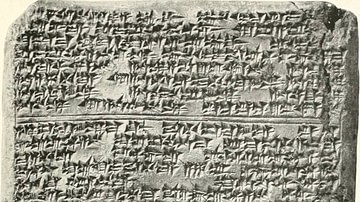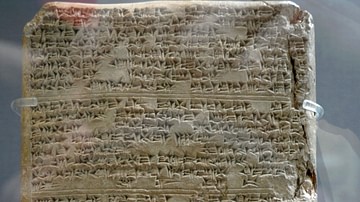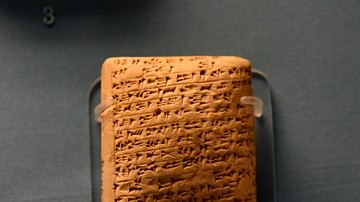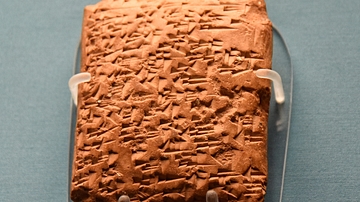Illustration
These clay tablets (letters) were found in the ruins of Akhenaten's capital, Tell el-Amarna, Egypt. They were inscribed with Babylonian cuneiform inscriptions, not hieroglyphs. The letters represent the diplomatic correspondence sent by various vassal princes of the Egyptian Empire to the pharaoh Amenhotep III, Akhenaten, and Tutankhamun. They document a turbulent period when Egypt's preoccupation with domestic policy led to insurrection and instability throughout the Empire. The Amarna letters make reference to the Hapiru, depicted as roving bands of stateless people, based in the hill country, and conducting raids on cities. These "alternative Canaanites" formed the basis of the Biblical Hebrews. 14th century BCE. From Tell el-Amarna, Egypt. (The British Museum, London).
About the Author
Cite This Work
APA Style
Amin, O. S. M. (2016, September 13). The Amarna Letters. World History Encyclopedia. Retrieved from https://www.worldhistory.org/image/5623/the-amarna-letters/
Chicago Style
Amin, Osama Shukir Muhammed. "The Amarna Letters." World History Encyclopedia. Last modified September 13, 2016. https://www.worldhistory.org/image/5623/the-amarna-letters/.
MLA Style
Amin, Osama Shukir Muhammed. "The Amarna Letters." World History Encyclopedia. World History Encyclopedia, 13 Sep 2016. Web. 13 Apr 2025.








